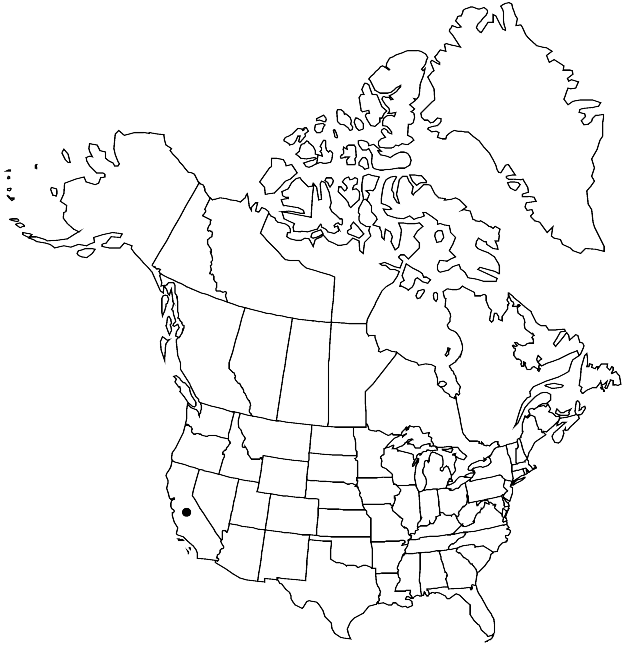Difference between revisions of "Orthotrichum kellmanii"
Bryologist 107: 210, fig. 2. 2004.
FNA>Volume Importer |
imported>Volume Importer |
||
| (6 intermediate revisions by 2 users not shown) | |||
| Line 27: | Line 27: | ||
|distribution=Calif. | |distribution=Calif. | ||
|discussion=<p>Of conservation concern.</p><!-- | |discussion=<p>Of conservation concern.</p><!-- | ||
| − | --><p>Only two species of Orthotrichum have immersed stomata and uniformly 2-stratose distal laminal cells; Orthotrichum hallii is a species of calcareous rock found sporadically throughout western North America, while O. kellmanii occurs on sandstone boulders only at a few sites in central California. Orthotrichum kellmanii is unique in the genus because it has prostrate stems that give rise to ascending vegetative and reproductive stems, the latter with differentiated leaves compared to vegetative stems. The stomata are found in the proximal half of the capsule, mostly covered by subsidiary cells; the exostome teeth are blunt and cribrose; and the endostome segments are fragile and delicate.</p> | + | --><p>Only two species of <i>Orthotrichum</i> have immersed stomata and uniformly 2-stratose distal laminal cells; <i>Orthotrichum hallii</i> is a species of calcareous rock found sporadically throughout western North America, while <i>O. kellmanii</i> occurs on sandstone boulders only at a few sites in central California. <i>Orthotrichum kellmanii</i> is unique in the genus because it has prostrate stems that give rise to ascending vegetative and reproductive stems, the latter with differentiated leaves compared to vegetative stems. The stomata are found in the proximal half of the capsule, mostly covered by subsidiary cells; the exostome teeth are blunt and cribrose; and the endostome segments are fragile and delicate.</p> |
|tables= | |tables= | ||
|references= | |references= | ||
| Line 36: | Line 36: | ||
-->{{#Taxon: | -->{{#Taxon: | ||
name=Orthotrichum kellmanii | name=Orthotrichum kellmanii | ||
| − | |||
|authority=D. H. Norris | |authority=D. H. Norris | ||
|rank=species | |rank=species | ||
| Line 50: | Line 49: | ||
|publication year=2004 | |publication year=2004 | ||
|special status=Endemic | |special status=Endemic | ||
| − | |source xml=https:// | + | |source xml=https://bitbucket.org/aafc-mbb/fna-data-curation/src/2e0870ddd59836b60bcf96646a41e87ea5a5943a/coarse_grained_fna_xml/V28/V28_75.xml |
|genus=Orthotrichum | |genus=Orthotrichum | ||
|species=Orthotrichum kellmanii | |species=Orthotrichum kellmanii | ||
Latest revision as of 21:37, 5 November 2020
Plants to 1 cm. Primary stems creeping, vegetative and fertile stems erect; leaves differentiated on vegetative and fertile stems. Stem leaves erect-appressed when dry, ovate-ligulate to ovate-oblong, grading to lanceolate or ovate-lanceolate on fertile stems, 1.4–2.5 mm; margins recurved to near apex, entire; apex obtuse, acute to broadly acuminate near perichaetia; basal laminal cells quadrate to short-rectangular, walls thin, not nodose; distal cells 10–12 µm, uniformly 2-stratose, papillae 1–3 per cell, simple, low. Specialized asexual reproduction absent. Sexual condition gonioautoicous. Seta 1 mm. Capsule immersed, ovate-oblong, 1.5 mm, 8-ribbed entire length, constricted below mouth when dry; stomata immersed; peristome double; prostome absent; exostome teeth 8 splitting to 16, erect to spreading when dry, densely and coarsely papillose; endostome segments 8, occasionally rudimentary, of 1 or 2 rows of cells, smooth. Calyptra short-conic, smooth, sparsely hairy, hairs papillose. Spores 8–12 µm.
Habitat: Dry sandstone boulders in dense chaparral
Elevation: moderate elevations (600-700 m)
Discussion
Of conservation concern.
Only two species of Orthotrichum have immersed stomata and uniformly 2-stratose distal laminal cells; Orthotrichum hallii is a species of calcareous rock found sporadically throughout western North America, while O. kellmanii occurs on sandstone boulders only at a few sites in central California. Orthotrichum kellmanii is unique in the genus because it has prostrate stems that give rise to ascending vegetative and reproductive stems, the latter with differentiated leaves compared to vegetative stems. The stomata are found in the proximal half of the capsule, mostly covered by subsidiary cells; the exostome teeth are blunt and cribrose; and the endostome segments are fragile and delicate.
Selected References
None.
